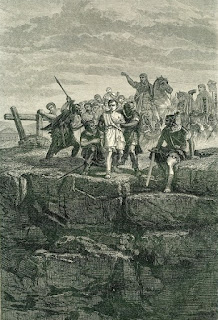 | Roman history is full of stories about the fates of those who broke the law. When Tarpeia let the enemy Sabines into Rome, she was thrown from a precipice above the Roman forum. It then became established practice to throw traitors from the “Tarpeian Rock”. Such tales served as a warning for future generations. Roman society was patriarchal. The family’s oldest living male had, in theory, the power to kill anyone within his household with impunity. This included not only those living under his roof, but the wider family as well. |  |
 Parricides were commonly punished by being 'condemned to the beasts', which was very popular in the Roman world. Parricides were commonly punished by being 'condemned to the beasts', which was very popular in the Roman world. | Anyone who killed his father, mother, or another relative (parricide) was subjected to the “punishment of the sack” (poena cullei). This allegedly involved the criminal being sewn into a leather sack together with four animals – a snake, a monkey, a rooster, and a dog – then being thrown into a river. Was anyone ever actually punished this way? It seems unlikely. The emperor Constantine’s penalty for parricide only specified that snakes should be used. |  |
 | Taking part in the Roman census was compulsory as the state needed a complete record of citizens’ property for taxation. According to Dionysius of Halicarnassus, the sixth king of Rome Servius Tullius decreed that anyone who did not participate in the census would lose their property and be sold into slavery. The collage of sources from many different periods creates Roman punishment that sometimes seems unlikely at best. |

No comments:
Post a Comment